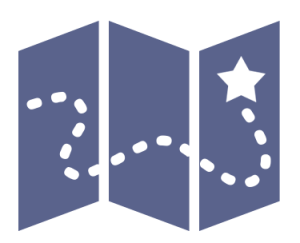
Roadmap:
Play Melodies By Ear (Solfa)
This is a preview of a Musical U Roadmap.
Roadmaps are a “big picture” guide to developing a particular musical skill. Learn more about Roadmaps here.
This roadmap is designed to teach you to play melodies (tunes) by ear using solfa. This same skill can also be useful for working out basslines in songs, and as a foundation to figure out more complicated music by ear.
There is a close connection between intervals and solfa: they are two different ways of approaching the same core skill, so you will find interval-related modules and exercises below, which you will approach with a “solfa” mindset.
If you are interested in using the intervals method instead, please see the alternative Roadmap Playing Melodies By Ear (Intervals).
By the end of this roadmap you will be able to play simple melodies by ear on your instrument.
Requirements
To use this roadmap effectively you should complete the following modules before you start:
Phase 1: Fundamentals
Phase Accomplishments
- Appreciate the simplicity and the subtlety of pitch.
- Understand what relative pitch is and its importance in music.
Before starting to learn solfa and how to play melodies by ear is it important to understand how pitch works, what exactly your sense of “relative pitch” is and how it will allow you to play by ear.
Start by taking the Ear Expansion: Pitch module. You might be surprised by how powerful and subtle this simple concept is in music!
Then move on to the Ear Expansion: Intervals module which explain the “what, why and how” of intervals and relative pitch, providing context for the solfa framework you’ll be learning:
As you will learn in this module, solfa is one of three approaches to recognising intervals, and it is the one this Roadmap will focus on.
If you have difficulty
This phase is about understanding the fundamental concepts of pitch and relative pitch, so if you have questions or aren’t clear on something, the best place to ask is in the Discussion for the corresponding module.
Start This Roadmap Today!
Get instant access to the full Roadmap and every training module included when you join Musical U today.
Phase 2: Solfa Preparation
Phase Accomplishments
- Learn how interval recognition builds relative pitch.
- Learn about the solfa framework for relative pitch.
Continue learning how interval recognition works with the Learning Intervals module. This will introduce you to three methods: Reference Songs, Solfa, and “Just Doing It”.
Note: This Roadmap is based on you focusing on the Solfa framework. You should however feel free to explore the other two approaches, and you can find more information on this in the alternative Roadmap, Playing Melodies By Ear (Intervals).
Learn the details of solfa with the dedicated module, Start Solfa:
In this module you learn how solfa works and how it can be used to identify the notes in a song. You will also learn some basic singing exercises you can use to begin training your solfa skills.
If you have difficulty
Some of the material in the Learning Intervals module may seem advanced right now. Don’t worry! As long as you can pass the quiz you don’t need to worry about mastering every detail. The goal at this stage is to see how intervals and solfa relate to each other.
If you’re not sure that the solfa approach in this Roadmap is right for you, just explain in your Progress Journal and the team will be happy to help you decide if and how to adapt it.
If you aren’t confident singing as a way to develop your solfa skills, try exploring the first two Phases of the Learn to Sing Roadmap to master matching pitch and vocal control. Remember: you don’t need to have a great-sounding voice to benefit from using singing to learn solfa!
Start This Roadmap Today!
Get instant access to the full Roadmap and every training module included when you join Musical U today.
Phase 3: Start Learning Solfa!
Phase Accomplishments
- Easily recognise and reproduce the notes of the major pentatonic scale.
- Connect your solfa skills with your instrument.
Now it’s time to begin practising solfa note recognition. As you learned in Start Solfa there is a certain type of scale, the major pentatonic, which is very common in music and is a great starting point for learning to recognise notes by ear using solfa.
In this Phase you will use either the Interval Recognition 1 module, or if you have an iOS device you can use the SingTrue app, to learn to recognise the notes of the major pentatonic scale: do, re, mi, so, la, do’
The Interval Recognition 1 module provides plenty of practice material for you to train your solfa skills:
Don’t aim to complete the module (unless you want to!). For now, aim to pass the “ascending” and “descending” levels of lessons covering the following types of interval:
unison, major second, minor third, major third, perfect fourth, perfect fifth, major sixth, perfect octave
These correspond to the solfa notes you will need for the major pentatonic:
| Solfa Note | Interval from “do” |
|---|---|
| do | unison |
| re | major second |
| mi | major third |
| so | perfect fifth |
| la | major sixth |
| do | perfect octave |
and a few more which appear between different notes of the major pentatonic scale.
If you have an iOS device you can get the interactive SingTrue app for free as part of your Musical U membership and this provides an easy and convenient alternative to the Interval Recognition 1 module for building your solfa note recognition skills:
As always, we want to connect your listening skills with your instrument. Once you’re getting the hang of the major pentatonic scale in solfa, start to connect it with your instrument practice:
This is also a good time to increase your fluidity and comfort with the notes of the major pentatonic scale. Here’s a fun exercise to include in your training:
If you have difficulty
This phase is about really developing your solfa note recognition skills and the best place to ask questions is in the Discussion for the Start Solfa module or in your Progress Journal.
Keep in mind that this phase could take several weeks to really master.
If you find yourself having difficulty with particular types of intervals or solfa notes, [description shown to members only].
Of course, if you’re really feeling stuck and those tips haven’t helped, just post your question in the module Discussion or your Progress Journal and the team will help you keep moving forwards.
Start This Roadmap Today!
Get instant access to the full Roadmap and every training module included when you join Musical U today.
Phase 4: Playing By Ear Preparation
Phase Accomplishments
- Understand exactly what “playing by ear” is and how it works.
- Learn how to find the key of a song by ear.
Playing music by ear is a topic which causes a lot of confusion and misunderstandings among musicians.
Before continuing with your own play-by-ear training, take a bit of time to explore two modules which will help you get 100% clear on what “playing by ear” is – and what it isn’t.
The Start Playing By Ear module gives you the full low-down on playing by ear, clarifying what this ability involves, the various skills required to do it, and helping you take your first steps in playing by ear yourself.
Then check out the Play-By-Ear Process module which provides examples of a musician going through the process of figuring out songs by ear.
As these two modules explain, knowing the key of a song can greatly accelerate the process of figuring out the notes of the melody, by revealing the tonic (“do” in solfa) and the type of scale used. In Finding the Key you’ll learn a simple 4-step process to find the key of a song by ear:
Begin trying to use this process now, and then continue developing your key-finding skills as the next Phases progress.
If you have difficulty
This phase is about understanding the overall process of learning to play by ear.
You do not need to master the examples in the Play-By-Ear Process module or the skill of finding the key by ear.
If you are confident you have understood the message of Start Playing By Ear and have a feel for how finding the key of a song and playing by ear work, you should feel free to move on.
Start This Roadmap Today!
Get instant access to the full Roadmap and every training module included when you join Musical U today.
Phase 5: Start Playing Melodies By Ear
Phase Accomplishments
- Figure out simple melodies by ear using your solfa skills.
- Start to play by ear directly on your instrument.
Now that your solfa skills are getting solid and you understand how playing by ear works, it’s time to do it!
We’ll start off simple. Don’t worry that the melodies you really want to play by ear are more complicated than these ones you’re starting with. They are all built on the same foundational structure and you will quickly find your ability to tackle complex melodies growing, as long as you start off simple and proceed with patience.
Focus on the first two lessons of the Melody Practice: Major Pentatonic module which will help you to start figuring out melodies by ear:
These lessons explain which solfa notes are present in the scale being used and you can use the “Solfa” version of the Training and Testing tracks to apply your solfa note recognition skills to figure out the melodies by ear.
These melodies may be simple, but you should still take pride in the fact that you are doing it! You are now playing melodies by ear on your instrument.
If you have difficulty
Hopefully the first two lessons of the Melody Practice module will go quite smoothly for you if you’ve mastered the major pentatonic solfa scale. If you find yourself struggling, ask for help in the module Discussion or your Progress Journal.
When it comes to applying these skills to your instrument, the overall idea is the same for everybody, but you may encounter specific questions or struggles for your instrument. Don’t be shy! Ask in your Progress Journal and the team will be happy to help you figure out the best approach.
Start This Roadmap Today!
Get instant access to the full Roadmap and every training module included when you join Musical U today.
Phase 6: Play Major Pentatonic Melodies
Phase Accomplishments
- Extend your play-by-ear skills to the full major pentatonic scale.
The remainder of the Melody Practice: Major Pentatonic module will extend your skills to the full “major pentatonic” scale. This is a powerful stage to reach since this scale is so prevalent in music. Even when you encounter melodies which use other notes, often the major pentatonic will give you a great starting point for playing them by ear.
Finish applying your solfa recognition skills to the full set of intervals present in the major pentatonic by completing this module:
Then there are two exercises you can do to connect your skills to your instrument:
You should start to feel a real sense of satisfaction, as these melodies are becoming more and more like the music you hear every day!
If you have difficulty
This phase builds directly on the skills you have been developing in earlier phases so although it might take some time to master, the journey should be fairly smooth.
If you have difficulty with the Melody Practice module, post a question in the end-of-module discussion. If you aren’t sure how to do the instrument exercise recommended above, or you have another kind of question, you guessed it… just ask in your Progress Journal!
Start This Roadmap Today!
Get instant access to the full Roadmap and every training module included when you join Musical U today.

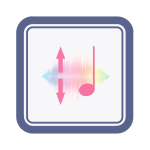 Ear Expansion: Pitch
Ear Expansion: Pitch Ear Expansion: Intervals
Ear Expansion: Intervals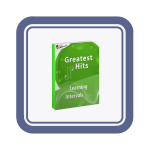 Learning Intervals
Learning Intervals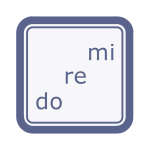 Start Solfa
Start Solfa Solfa Singing Exercises
Solfa Singing Exercises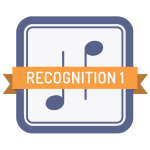 Interval Recognition 1
Interval Recognition 1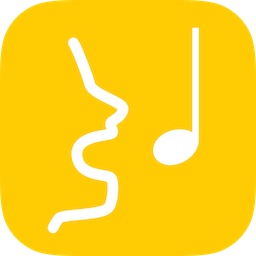 Optional: SingTrue App
Optional: SingTrue App Practice solfa with your instrument
Practice solfa with your instrument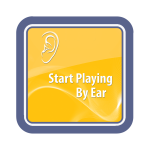 Start Playing By Ear
Start Playing By Ear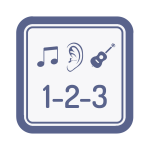 The Play-By-Ear Process
The Play-By-Ear Process Finding the Key
Finding the Key Practice finding the key
Practice finding the key Melody Practice: Major Pentatonic
Melody Practice: Major Pentatonic